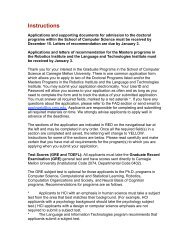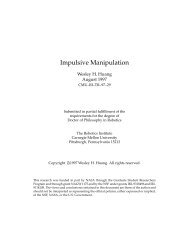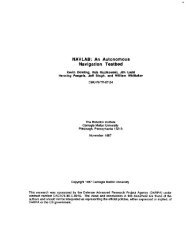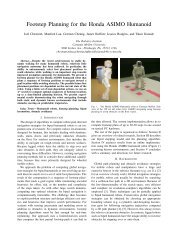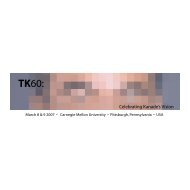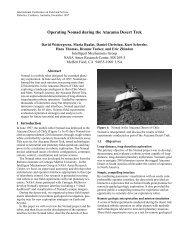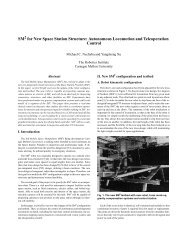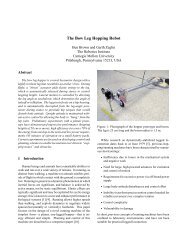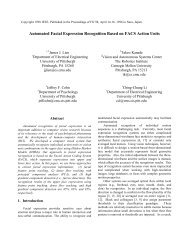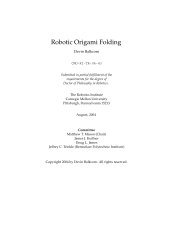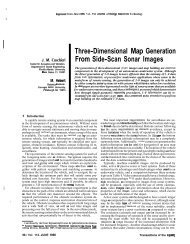A System for Automated Fixture Planning with Modular Fixtures
A System for Automated Fixture Planning with Modular Fixtures
A System for Automated Fixture Planning with Modular Fixtures
You also want an ePaper? Increase the reach of your titles
YUMPU automatically turns print PDFs into web optimized ePapers that Google loves.
IS<br />
Depending on objects’ shape, one scheme may be more effiient than the other. If a simple interference<br />
checking sheme recognizes the possibility of interference, a compurationaily intensive algorithm needs to<br />
beusedtoretinetheanswer[Gursoz911.<br />
When the face of one object interferes <strong>with</strong> the face of another object, two objects are in interference.<br />
Also. if one object is completely <strong>with</strong>in the other object, they are in interference. Intexfemce checking in<br />
fixture planning can be per<strong>for</strong>med between objects or berween the faces of an object depending on the<br />
circumstances in order to minimize the computation time.<br />
?he compuration time <strong>for</strong> an interference checking algcuithm increases <strong>with</strong> the number of faces on the<br />
two objects, and it can take a long time if objects are represented by many faces. In order to speed up the<br />
inteaference checking, a few schemes can be used in future planning: 1) simplifiiatioo of object geometry<br />
<strong>with</strong> a smaller number of faces, 2) consideratiw of only relevant faces, 3) use of a fast scheme to detect<br />
interference possibility, and 4) use of a 2D interference checking scheme.<br />
1) Simplifimtioo of object geometry<br />
When precise interference checking between ob+& is not criiical in tixture planning, it is possible to<br />
speed up the mputariOn by simplifying the object’s gunneuy. Gayneay of fixture componens can be<br />
approximated by simple polyhedra <strong>with</strong> a small number of faces. For example, a cylinder type object will<br />
have many facers in boundaty npreseotatioa to aumately represent its side surface. By simplifying the<br />
cylinder into a rectangular block, the inmfereoce checking can be done quickly. Details on how each<br />
fixture component is simplified can be found in Chapter 4. When some clearance is needed between<br />
fixture components <strong>for</strong> easy fixture assembly and defy from me cum paths, the geomeay of fixture<br />
components should be enlarged by adding the necessary clearance.<br />
2) Consideration of relevant faces of objects<br />
Although an object may have many h, only a few faces must be msidered fa interfmnce checking.<br />
For example, when inmfemce checking is required benveen a clrmp and the pars any faces <strong>with</strong>in the<br />
holes in the pan can be ignored ifaciamp is mt placedin a hole. Even ifaclamp IS placed in a hole, faces<br />
<strong>with</strong>in the rest of the holes can be ignored. Other pruning methods are ku.sed in Chapter 5; the<br />
interference checking algorithm is applied between fumre components and the pan.<br />
3) Use of a fast detectioo scheme to detect interference possibility<br />
The possibility of interference between faces can be checked by CMnparing the maximal and minimal<br />
coordinates of both faces in the same way as it is used to check the possibility of interferewe between<br />
objects.<br />
4) Use of 2D interference checking scheme<br />
When a polyhemal object is projmed onto a plane. it can be represented as a polygon. When two objects




